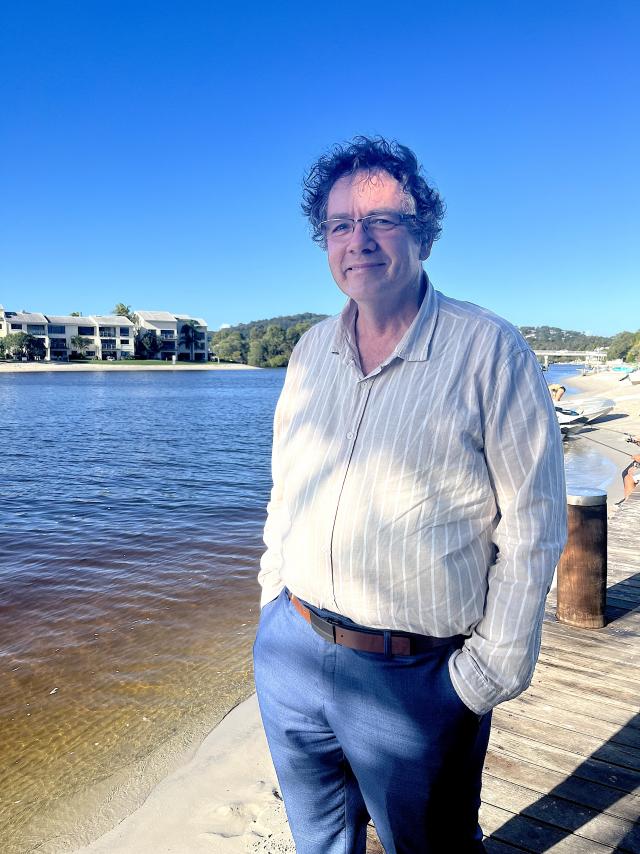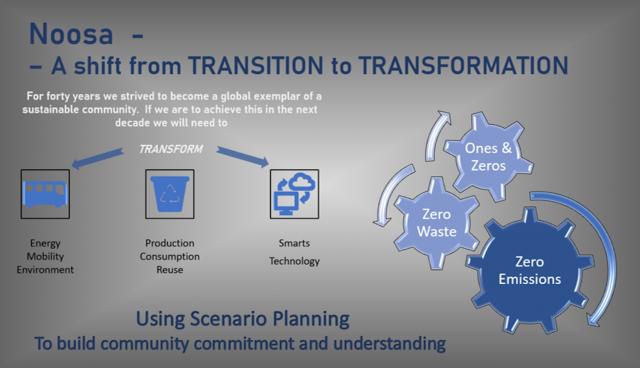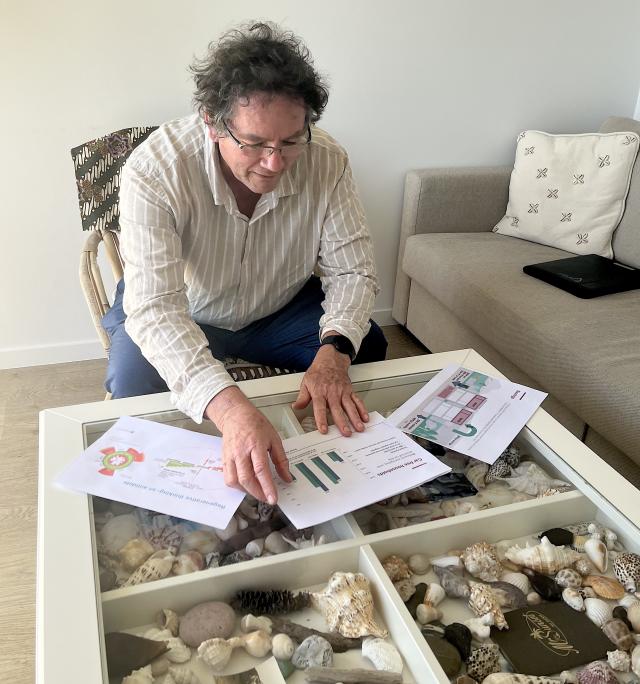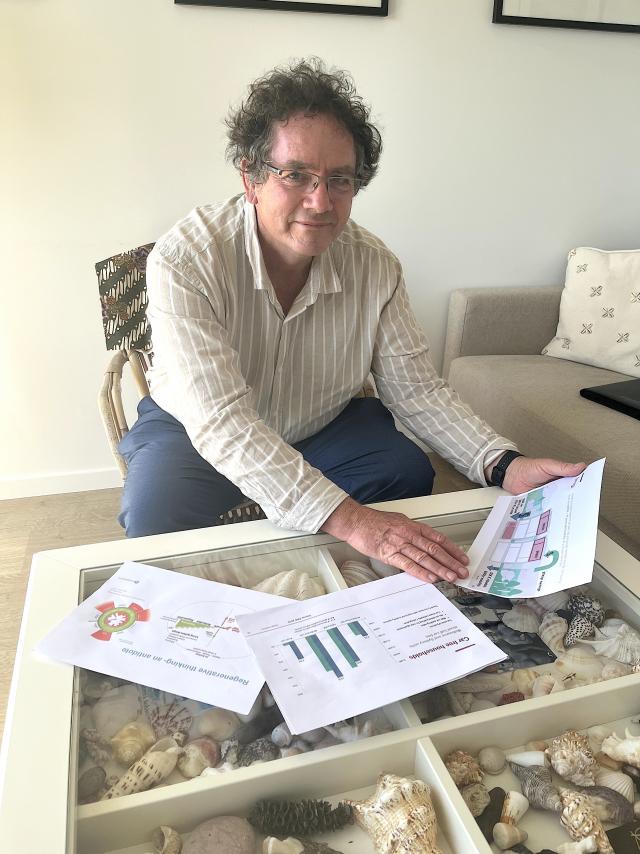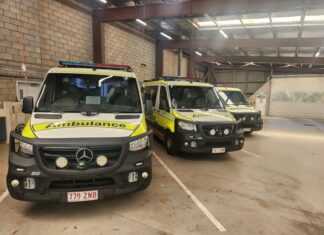BRIAN STOCKWELL was Noosa Shire’s youngest ever councillor when elected for Division 3 from 1988 to 1991. He was re-elected as a Noosa Shire Councillor in 2016, after an interim career as an academic and in various senior management roles in state and local government. Always a deep thinker about Noosa, he is currently working on a process to look at future scenarios and how to engage the entire community. PHIL JARRATT put him in The Hotseat.
What inspired you to come back and have another go as a councillor 25 years later?
Two things. One is that it was planned. I didn’t want to leave it the first time around but I had a family and I couldn’t afford to be there, so I developed a life plan which was that I would go back after I turned 55. Two is that around about 2009 I realised that climate change was a big issue and that we needed to get people engaged. I looked at going into state government but realised I was better suited to local government. So in 2009 I became president of the Ratepayers Association and got enthusiastic about creating sustainability at the local scale.
Was local politics a different game when you came back in 2016?
Oh yes. In 1988 I was very green, but when I came back I’d spent a long time in fairly senior management roles in state and local government, so I had a much greater suite of knowledge and skills. But yes, it was very different. In 1988-91 we had 13 councillors and we had no-holds-barred debates. It was Noel Playford’s first term as mayor, and Bob Abbot’s third term as councillor. Doug Bettens was a voice of experience and we had a few people who had a very different Noosa in mind when they debated. There were a lot less restraints about what councillors could say or do. But in 2016 it was certainly an interesting change. They’d just had that previous short term council after de-amalgamation, which was about getting the business of council operational again, and that’s why Noel Playford was important, being a very efficient operator. Then 2016-2020 was really focused on getting the policy platform right, and in 2020 we’ve had a much broader policy perspective amongst councillors, which is interesting.
In a good way or a bad way?
Well, it represented democracy in action so I’d say in a good way. The big thing about this council is that we get on quite well, so if we disagree at a meeting, we just move on. The fact that we have four councillors in their first term in local government means that my role has changed a bit. I had to change the way I contributed and play the role of mentor in some ways, for example in understanding the history and the process, which is why now I think we’ve reached the time when we have to push forward on what I regard as the key challenges for Noosa.
I’ve been working to build a community process looking at future scenarios for Noosa.
The current advertising of the Housing Strategy has brought forward my thinking about going broadly to the public, because some of the critique is from people who think it offends the traditional Noosa Planning principles. I think it is important we reset the conversation so it’s not about what worked in the 1990s, but about what we need to do if we want to maintain our reputation as a sustainable community into the future.
What is it that worked in the 1990s but isn’t working now?
In the ‘90s to achieve conservation of natural assets we had to protect them from development. Now tenure will not protect natural assets, as the 2019 bushfires showed us. With climate change we have to put practices in place to manage our land or we won’t see the biodiversity outcomes we hope for. We are really good at environmental protection, and we still have aims to have 50 percent of the shire protected as conservation estate, but what we have to ensure is that we have the capacity to manage it so we don’t lose it through threats that may come along.
The other thing is that in the ‘90s the major threats from development could be controlled through planning schemes and the concept of sustainable carrying capacity, or population cap. That’s well embedded and is not likely to change. The Housing Strategy doesn’t do anything to that either. It might add a few hundred dwellings, but that’s all. However, the average number of people per household has gone down significantly since then, which provides the opportunity for infill without pushing population limits.
Why has the number per household dropped so much?
The demographics have changed, with a lot of singles or couples living in four to five bedroom houses. The census this year didn’t change much from the previous, about 2.1, but in 1997 it was closer to 3. The other thing that has changed is that in the ‘90s people could afford to buy their first homes here on the wages you could earn in Noosa. That’s no longer the case for most working families.
When you look back on it, in the ‘90s we were worried about over-development but we were living in paradise compared with the problems we face now.
Yes, it’s harder to find solutions. For example, the biggest threat from visitation is not related to how many people are sleeping in Noosa, it’s how many are driving here. That’s where destination management comes into it.
We weren’t being loved to death in the ‘90s.
No, I think that’s really kicked in over the last five years or so, when we reached the point where there’s never an off-season.
In the slide show you’ve put together about this, you talk about megatrends. I have a vague idea how that works but can you explain?
In past decades thinking about Noosa’s future was fairly straightforward – we didn’t want to become the Gold Coast and we wanted to protect nature. In the current context, considering megatrends, that type of thinking is somewhat meaningless.
To start a scenario for a planning process the first thing you look at is what are the megatrends, how they play out locally. I would then ask what are two critical axes of uncertainty. Those factors that the community believe are likely to be the key influences on the types of future we create. The role of technology is going to be very important in this. If you look at what Sydney has mapped in its transport scenarios, the high technology adoption option reduces emissions by 90 percent, whereas the ‘sustainability slowtech scenario’ model reduces it by 50 percent. That’s probably the scenario that we are heading towards in Noosa, because there’s still some disagreement in the community, for example using vehicle recognition to introduce congestion charges in key areas. Another big trend that’s increased in the last few years is global instability, which leads into the need for greater focus on self-sufficiency.
Am I hearing you correctly that you’re saying we have to slow the processes down in order to get outcomes? If so where does that leave ZEN 2026?
I’m not saying we’re slowing down. I’m saying if we look at zero targets for the council, that’s doable. For the community it’s probably doable for electricity but we’re nowhere near it in transport or waste. I think that’s why we need to do what I’m proposing, so that we can get to a shared view about where Noosa is going. We have baby boomers who are at that stage of life where they think about themselves too much, and we’ve got a whole lot of new arrivals who like the place but they don’t have an understanding of why Noosa is different and what we have to do to keep it that way. Then there are the Gen X-ers coming into town with money and they don’t realise that too much reliance on traditional economic growth will lead us where everywhere else has gone. They have to be involved in the conversation too.
I suppose one way to think about all of this is to consider what your own opportunities were at 18-34 and work out how to offer those same opportunities to that age bracket now. That’s a conversation that’s not happening yet because some people are in denial that there is a housing crisis. But kids today are thinking not only are they never going to be able to buy a house but they also have climate anxiety.
How important is waste?
From the council perspective, the green waste going into the tip is responsible for 63 percent of our carbon emissions. So, in terms of greenhouse gas, that’s one thing. In terms of landfill, there’s very little space left. While we’re good at recycling and we recycle more and more, we’re still creating more waste. Things like Plastic Free Noosa are working, but they’re still on the margins of the transformative change that needs to happen. And we still have a lot of people putting garden waste into the red bin, and so on. So, we create a lot of waste and it’s going up. We also use more water than all other communities in SEQ. That’s not a factor of tourism, it’s the resident population taking long showers, watering their gardens and filling up their pools.
This would be a good place to summarise the threats to our future in order of the need for immediate action.
The most immediate is housing, how we keep our work force and our 18-34 year olds. The only way we can do that is with public intervention, public dollars. We’re working with state and federal authorities to achieve that. We’re also looking at incentives to secure private investment from developers, where they hand over part of their development to a not for profit housing organisation. It’s called Inclusionary Zoning.
We then have the Destination Management Plan which will require new levers to be pulled if we are to address all those issues that can‘t be controlled by a planning scheme. So the DMP should take in Transport Strategy, Cultural Plan, Environment Strategy and the Noosa Plan. On top of that we have to build our brand but focus on regenerative tourism, which means people who want to experience nature and culture. There will always be people who just want to go to the beach, but we have to focus on fewer people having a richer experience. To achieve that you need levers to control mass tourism.
We then have waste. Zero Waste, Zero Emissions, Smart Biospheres, getting people out of cars, these are all aspirations that require transformational change, rather than a gradual transition. In the old lingo we are trying to facilitate a paradigm change. In my opinion before the community can be committed to achieving them, they need to understand them.
I am now trying to stimulate thinking within council and the community that to facilitate transformational change we need to engage in a meaningful way to get the current community enthusiastic about a ‘future Noosa’ that respects the principles of the past in terms of environmental protection and growth management, but which doesn’t simply defend the status quo.
What’s the time frame?
It’s going to be done progressively, and if by budget review time enough people think it’s a good idea we can get started.

